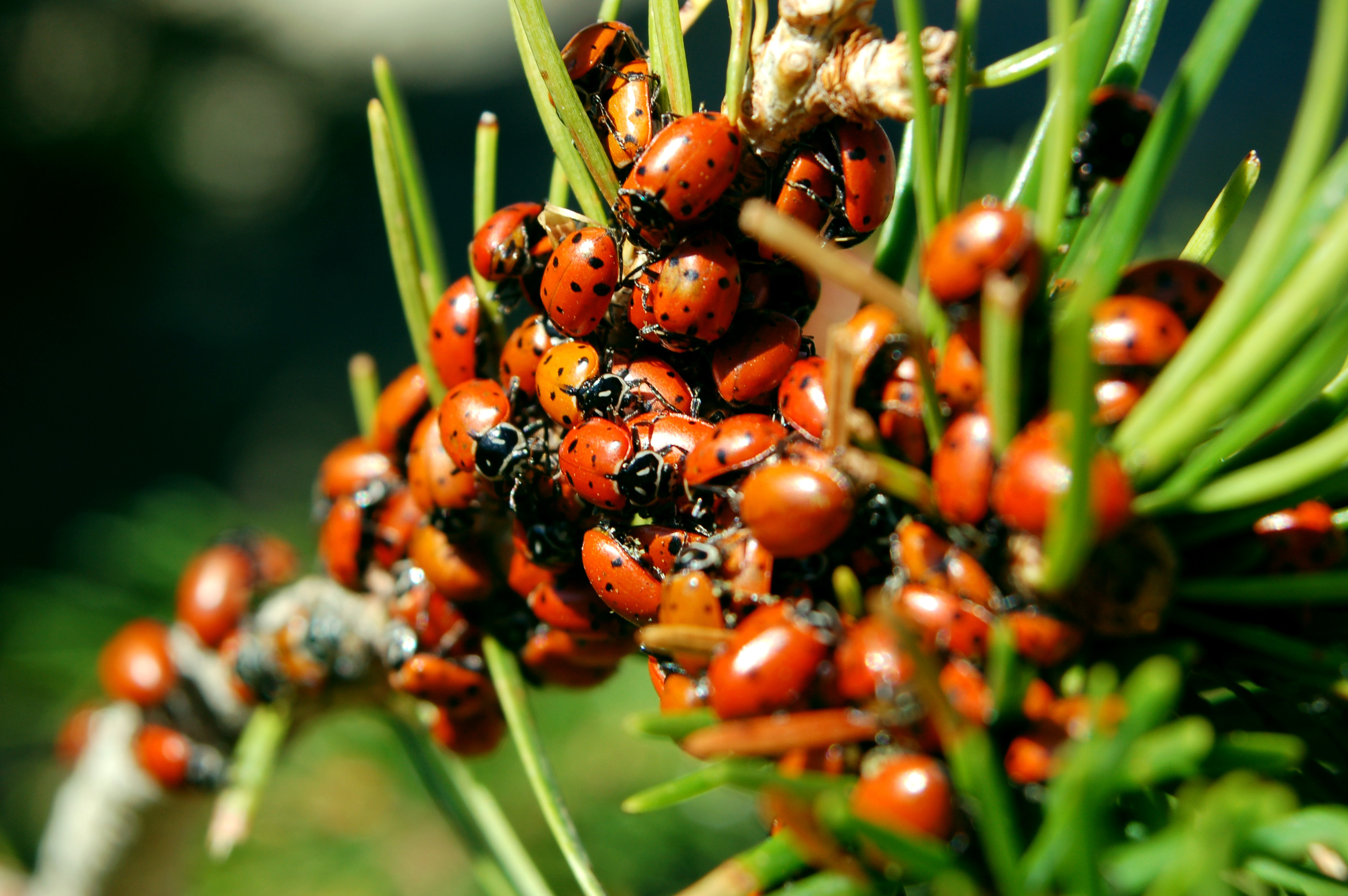Ladybug, also called the lady beetle or the ladybird, is a small, round beetle known for its bright colors and spots. Ladybugs are often bright red or yellow, with black, red, white, or yellow spots. They live in most areas of the world. There are thousands of species (kinds).

Most ladybugs feed on insects, especially aphids and scale insects, as well as mealybugs and mites. Many ladybugs lay their eggs near colonies of aphids. Depending on the species and environmental conditions, a female ladybug may live from a month to a few years. Over this time, she may lay as many as 1,500 eggs. The larvae (young) hatch after several days.
Loading the player...Ladybugs
The insects that ladybugs eat can damage crops. For this reason, many fruit growers and gardeners value ladybugs. In the late 1800’s, the cottony cushion scale was accidentally imported from Australia to California. The insect pest soon destroyed much of California’s citrus fruit crop. In response, scientists imported an Australian ladybug and a fly that fed on the cottony cushion scale. Within two years, the ladybug helped bring the pests under control. Some ladybugs may harm beans, melons, squashes, and other garden plants. But the work of the beneficial kinds of ladybugs far outweighs the damage done by the few harmful ones.
